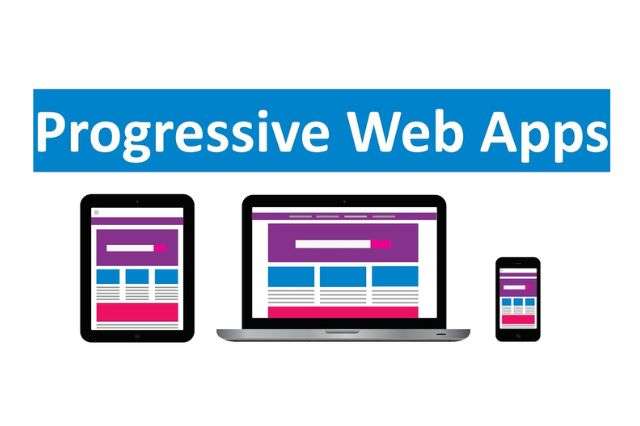All You Need to Know About Progressive Web Apps and Their Benefits
As consumers and Google are increasingly demanding super-fast and omnichannel shopping experiences, the pressure remains on eCommerce business owners to improve daily. PWAs are one way of getting a step closer to delivering just that. This article shares the answers you need to the question ‘what’s a PWA’ to help you decide if you will deploy this technology for your online store.
1. What are progressive web apps, and what do they do?
A progressive web app (PWA) is a web application that provides a user experience similar to that of a native mobile app. PWAs are built using common web technologies, such as HTML, CSS, and JavaScript. They are designed to be fast and reliable, even in challenging network conditions.
PWAs also offer some features that are typically associated with native apps, such as the ability to work offline and receive push notifications. In recent years, PWAs have gained popularity as a way to deliver a superior user experience without the need for users to install a separate app. In many cases, they can even be added to a user’s home screen, just like a native app. With the continuing rise of mobile web usage, PWAs are likely to become increasingly important in the coming years.
2. How can you create a progressive web app for your business or website?
A progressive web app (PWA) is a website that uses modern web technologies to deliver a native app-like experience to users. PWAs are typically built using HTML, CSS, and JavaScript, and they are designed to be fast, reliable, and engageable. There are many benefits of creating a PWA for your business or website.
For starters, PWAs are more discoverable than native apps because they can be downloaded directly from the web. In addition, PWAs are less expensive to develop and maintain than native apps because there is no need to create separate versions for different platforms. Finally, PWAs are more likely to be used by visitors because they offer a seamless and engaging user experience.
If you’re looking to create a PWA for your business or website, there are a few things you’ll need to do. First, you’ll need to create a manifest file that defines the name, icons, and other core details of your app. Next, you’ll need to write some service workers code that will enable your app to work offline and improve performance. Finally, you’ll need to test your app on real devices to make sure everything is working as intended. With these steps in mind, you’ll be well on your way to creating a successful PWA for your business or website.
Also read: Software Applications That Can Save You Time
3. What are the benefits of using a progressive web app over a traditional website or mobile app?
Progressive web apps (PWAs) are becoming increasingly popular as businesses strive to provide their customers with a seamless user experience across all devices. PWAs are websites that have been designed to function like native mobile apps, giving users the ability to access content offline and receive push notifications.
In addition, PWAs are typically much faster and more responsive than traditional websites, and they use less data. As a result, PWAs offer a number of advantages over traditional websites and mobile apps. For businesses, this means the ability to reach more customers and provide a better user experience. For users, it means faster, more reliable access to content. Ultimately, progressive web apps represent the future of the web, and it is only a matter of time before they become the norm.
4. Are there any drawbacks to using progressive web apps instead of other types of apps or websites?
While progressive web apps do offer several advantages over other types of apps or websites, there are also some potential drawbacks to consider. One concern is that progressive web apps may not be compatible with all devices or browsers.
Another potential issue is that progressive web apps may not have access to certain features or hardware on a device, such as a camera or GPS. Additionally, progressive web apps may also be more susceptible to security vulnerabilities. However, overall, progressive web apps offer a number of benefits that make them a viable option for many businesses and organizations.
5. How can you make sure that your progressive web app provides the best possible user experience for your customers or visitors?
When it comes to providing a positive user experience, progressive web apps (PWAs) have a lot to offer. By taking advantage of modern web technologies, PWAs are able to deliver an app-like experience that is fast, reliable, and engaging. In addition, PWAs are also designed to be accessible so that everyone can use them regardless of their device or browser. While there are many factors to consider when creating a PWA, there are a few key things that you can do to ensure that your PWA provides the best possible user experience.
First, make sure that your PWA is designed with performance in mind. Users expect PWAs to load quickly and be responsive, so it’s important to choose technology and hosting options that will minimize latency. In addition, take care to optimize your assets for different screen sizes and connection speeds. Second, keep your PWA up-to-date with the latest trends and technologies. This will not only help ensure that your PWA works well on all devices and platforms but also shows users that you’re invested in providing them with a positive experience. Finally, don’t forget to test, test, test! Be sure to test your PWA across a variety of devices and browsers before making it available to the public. By following these guidelines, you can be confident that your PWA will provide an exceptional user experience for all who use it.
6. Are there any other things that you need to know about creating and using progressive web apps on your website or in your business?
There are a few things to keep in mind when creating and using progressive web apps. First, they need to be designed for mobile devices first and foremost. This means that the user interface (UI) needs to be straightforward and easy to use on a small screen. Second, progressive web apps need to be fast and responsive.
This means that they should load quickly on mobile devices and respond to user input without any delay. Third, progressive web apps need to be secure. This means that they should be served over HTTPS and use encryption to protect users’ data. Finally, progressive web apps need to be accessible. This means that they should work well with assistive technologies such as screen readers. By keeping these things in mind, you can create progressive web apps that are both effective and user-friendly.





